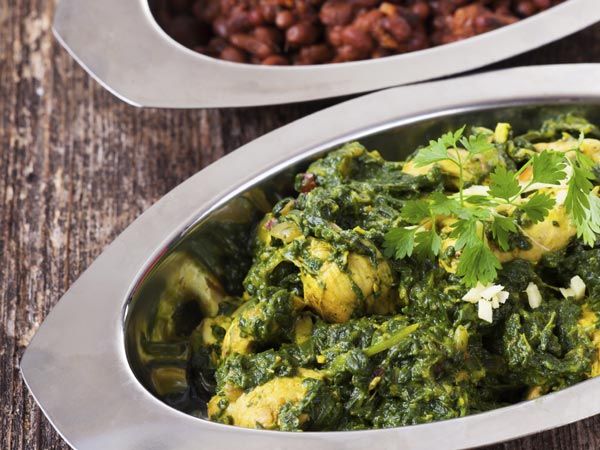
For a very long time I did not know what they call the vine after which the curry is named, so I could not document this recipe! The genus name of this vine is Basella and strangely is called Basale in the local dialect in Mangalore. It is also called Malabar spinach, though it is not even closely related to the spinach family. When cooked, it has a mild flavour and is slightly mucilaginous in texture. On your next visit to the vegetable vendor look out for this intertwined, soft stemmed vine with heart-shaped leaves and give it a go.
I have grown up relishing this curry. At first you don’t quite like the idea of a creeper in your curry and then there is this slightly mucilaginous texture that will eventually grow on you. If you master this recipe, it will fall into the category of comfort foods that remind you of your home and your mom (if you know what I mean).
Here’s the recipe of the curry.
Ingredients:
1 bunch basale
1 tomato, chopped
7 roasted red chillies (4 long and 3 small)
1 tsp roasted coriander seeds
1/s tsp cumin seeds
Tamarind water
½ tsp turmeric powder
½ coconut, grated
1 tsp mustard seeds
½ cup moong daal
2-3 garlic cloves
1 red chilly and some curry leaves for tempering
Method:
- Remove the leaves off the vine. Coarsely cut the leaves and cut the stem into 4-inch pieces.
- Grind coconut, red chillies, coriander, cumin, turmeric and tamarind water into a thick fine paste and keep aside.
- Boil the masala till the rawness disappears.
- Add the basale and daal to this and allow it to cook with the masala. Add the chopped tomato.
- Give it a quick boil.
- Meanwhile, heat some oil and add mustard seeds, garlic, curry leaves and red chilly. Allow the mustard seeds to pop and add this to the gravy to temper it.
- Serve hot with white rice.
In another version of basale, my mum adds tiny shrimps. Love that version, as well!
Image courtesy: ©Thinkstock photos/ Getty images
More On >> Easy Recipes




